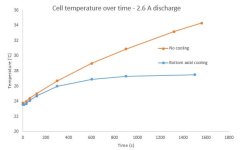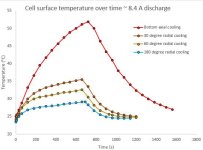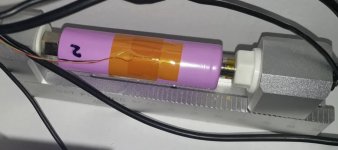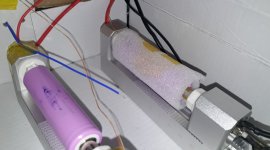SniperGaulois
10 kW
I am researching 18650 cell cooling, one source said that tab cooling prolongs cell life by reaching into all the layers of the battery, is it the same for cylindrical batteries?
How many watts of thermal energy does a 3000mah 18650 generate at 1,2,5 and 10C?
I found a couple of fun videos of X-ray and IR cameras of batteries:
IR: https://www.youtube.com/watch?v=hwXccpeN6Qc
x-ray: https://youtu.be/4u2ZgFRosoQ
How many watts of thermal energy does a 3000mah 18650 generate at 1,2,5 and 10C?
I found a couple of fun videos of X-ray and IR cameras of batteries:
IR: https://www.youtube.com/watch?v=hwXccpeN6Qc
x-ray: https://youtu.be/4u2ZgFRosoQ








